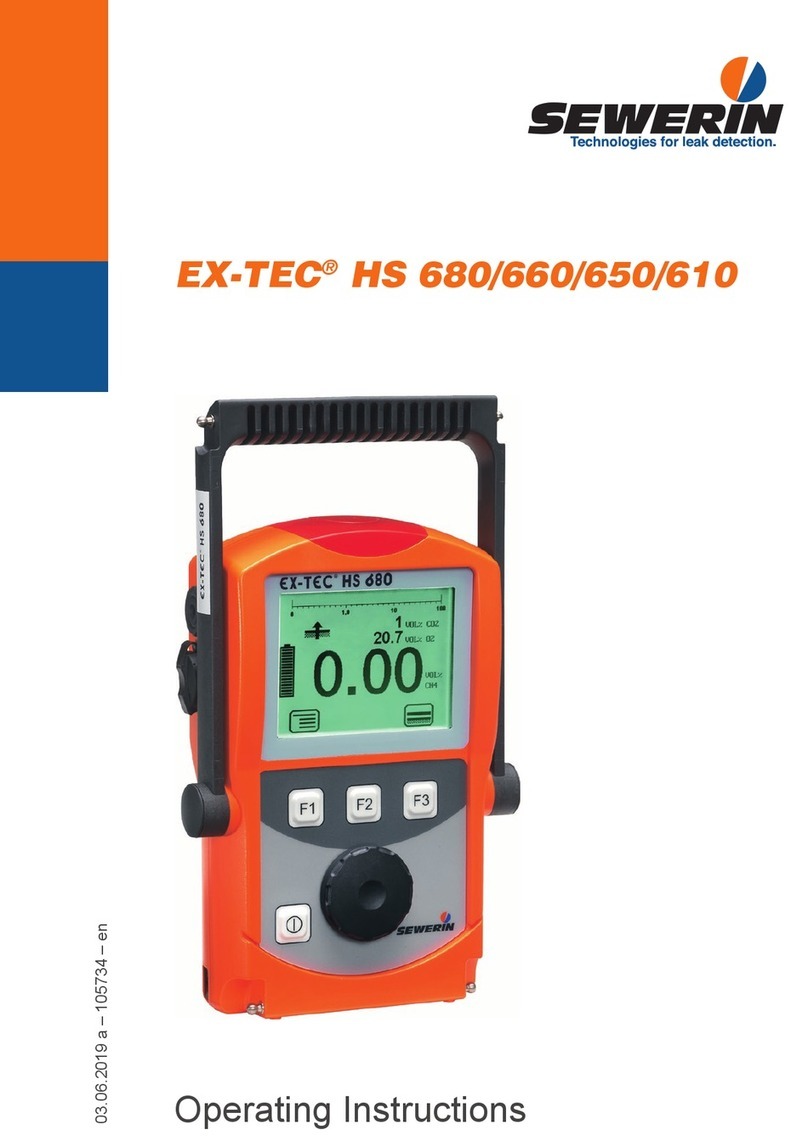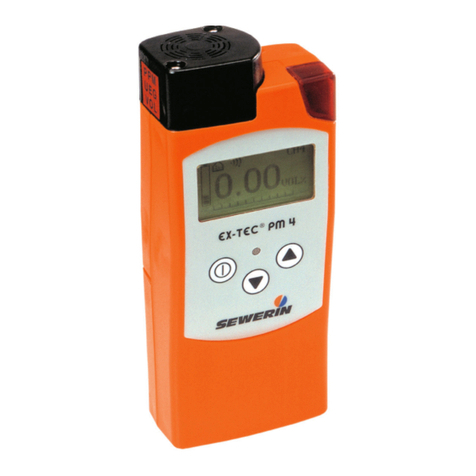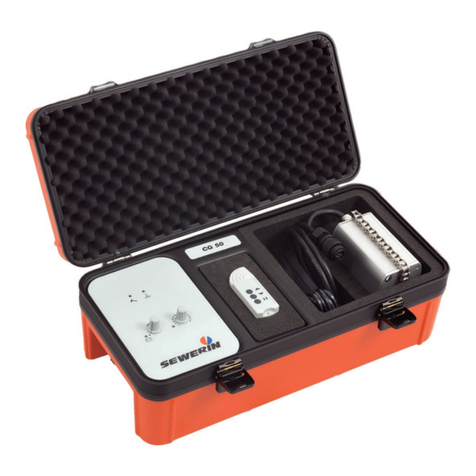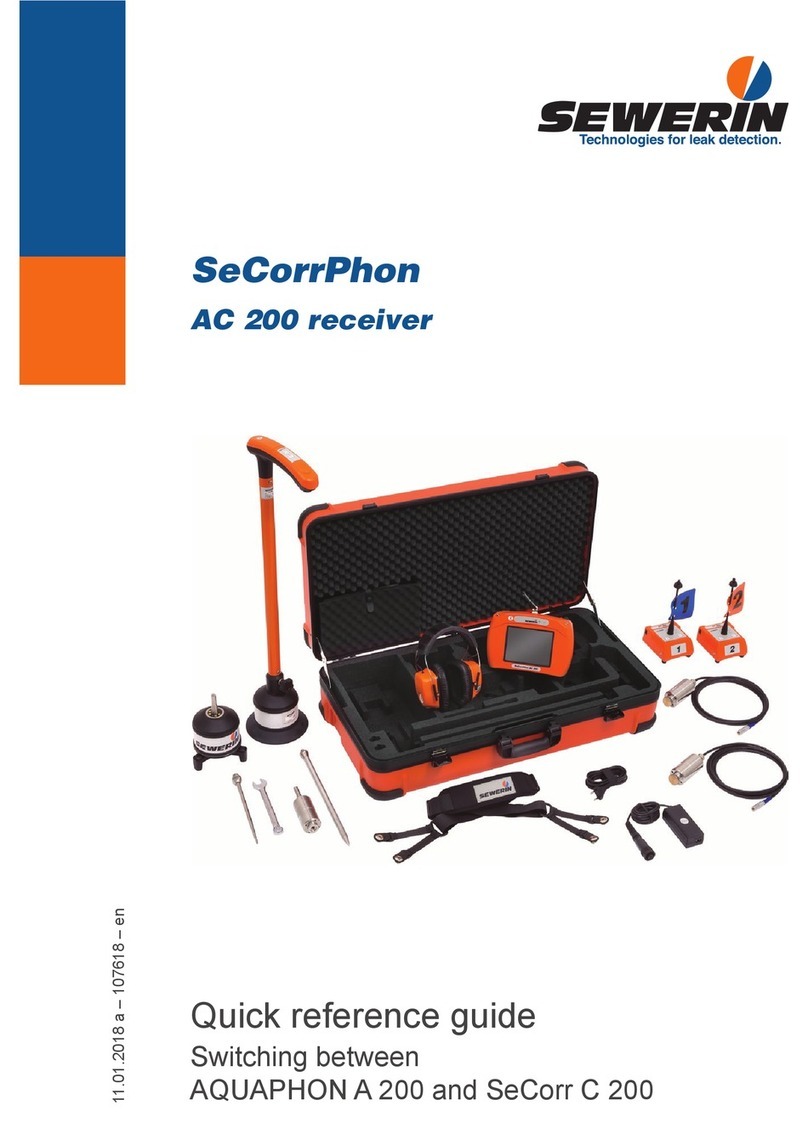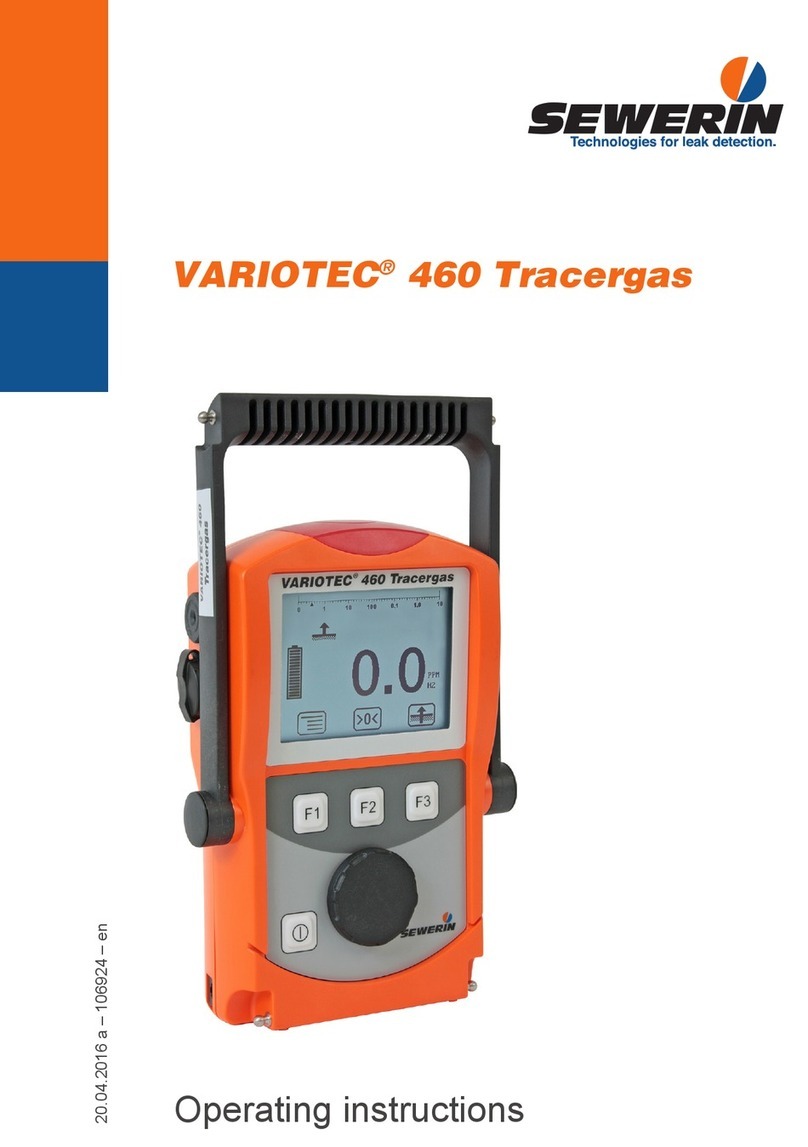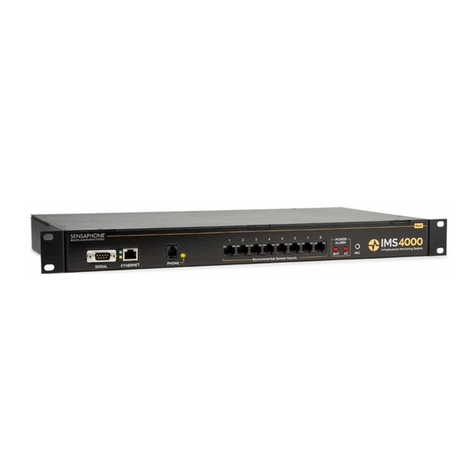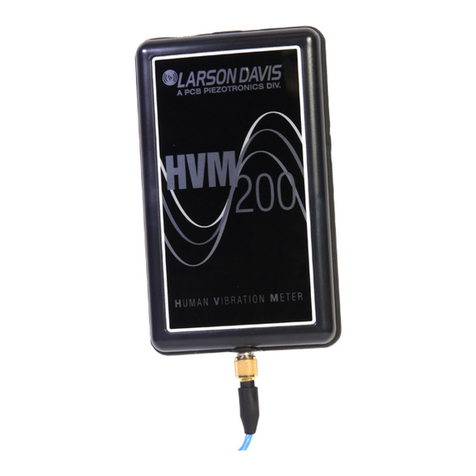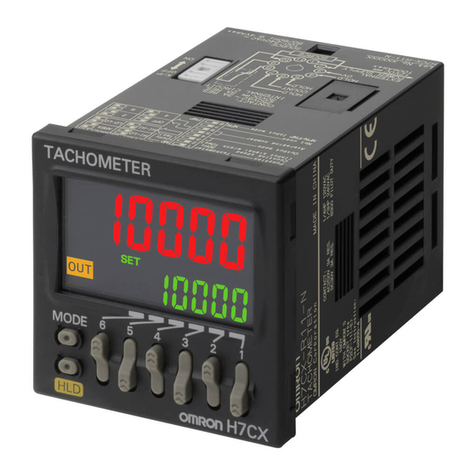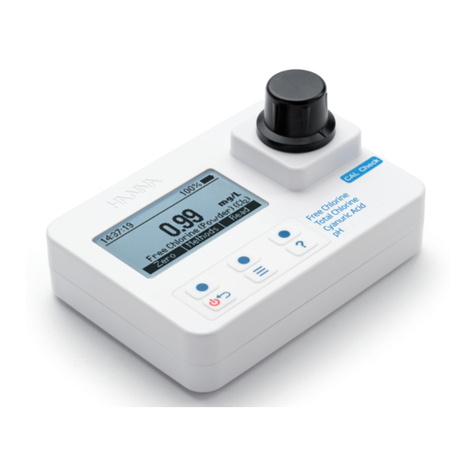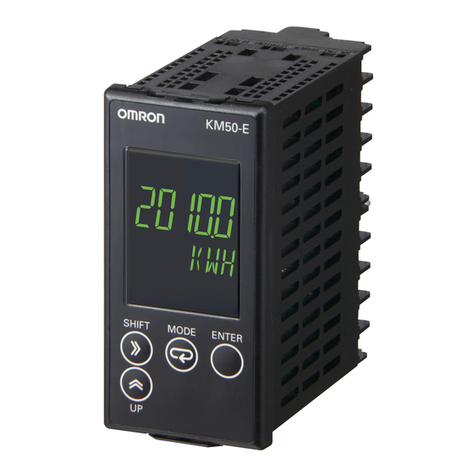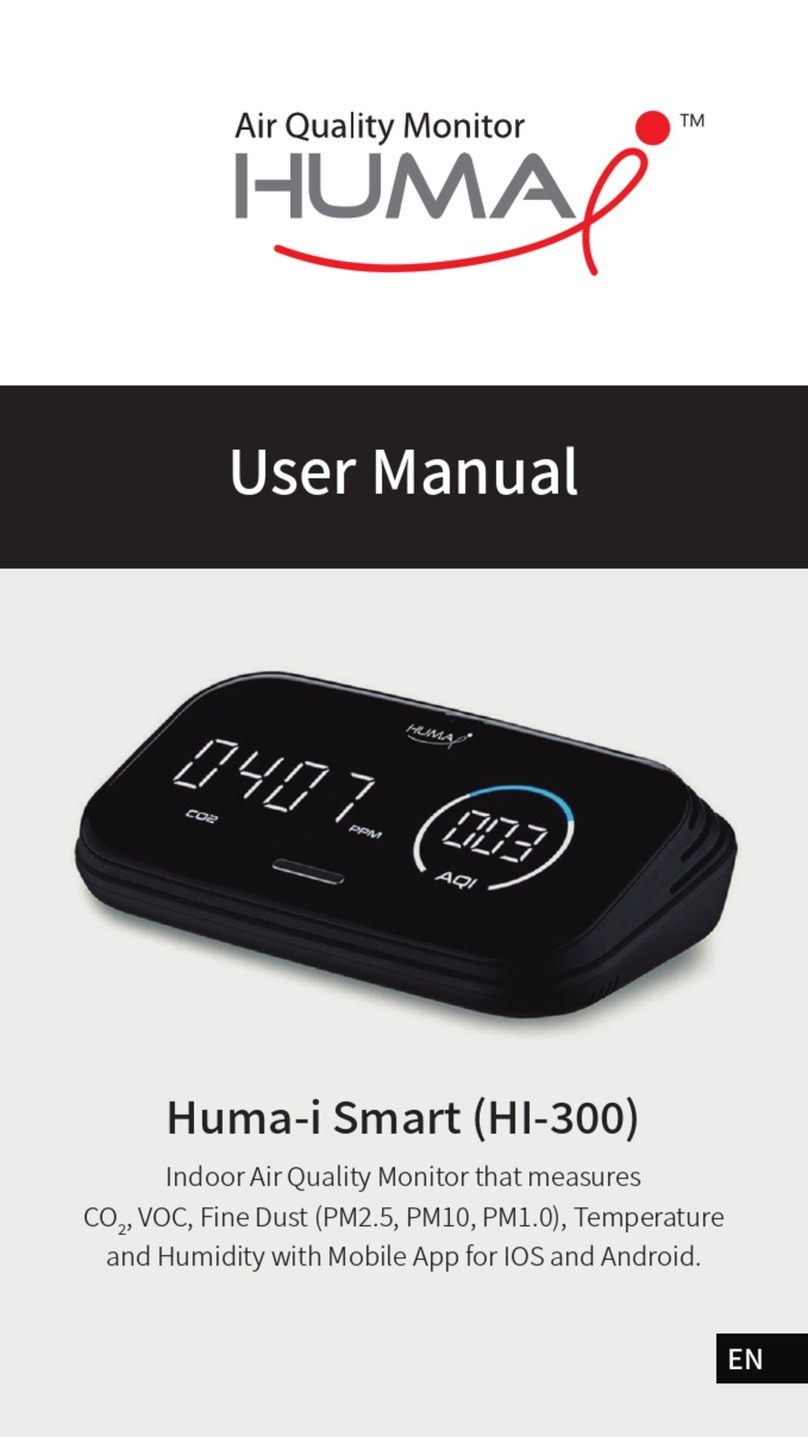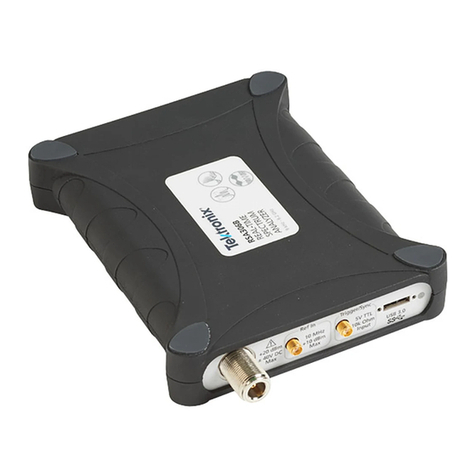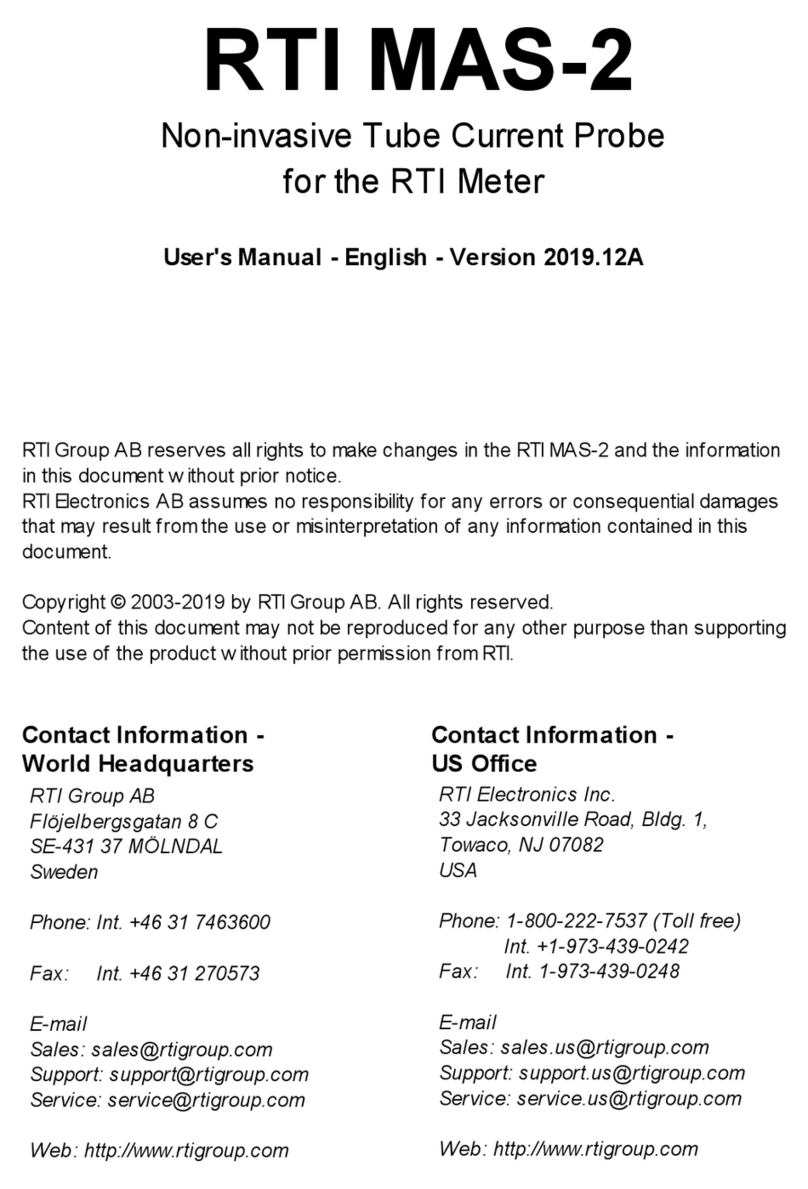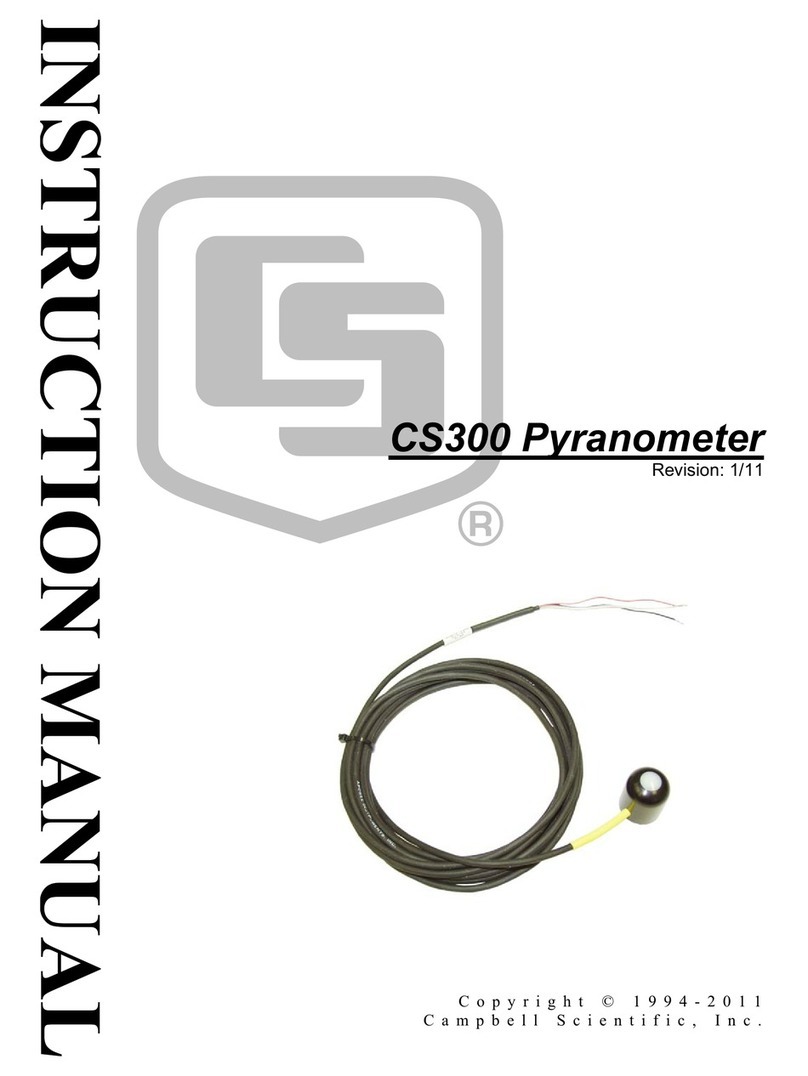sewerin UT 9000 User manual

28.02.2014 a – 107297 – en
UT 9000
Operating instructions
EDENBROS, LLC

UT 9000 R receiver
Handle
Display
Control panel
Connection for accessories (step-voltage probe),
with cover
Connection for headphones
Battery compartment
Fig. 1: UT 9000 R receiver
Volume, ON/OFF, measuring mode
Light sensor
Frequency, direction recognition,
next, select
Location type, depth, back
Fig. 2: UT 9000 R receiver control panel (functions of the keys)
Loudspeaker
Mini USB connector, with cover
Up, gain up
Signal behaviour, menu
Down, gain down

UT 9012 TX generator
Display
Control panel
Eye ring for carrying strap
Mini USB connector, with cover
External power supply connector
(vehicle cable)
Battery compartment
Fig. 3: UT 9012 TX generator
Volume, ON/OFF, back
Frequency up
Fig. 4: Generator control panel (functions of the keys)
Power level, menu, next, select
Frequency down
Connection for accessories
(set of cables, cable clamp)

Information about this document
The warnings and notes in the document mean the following:
AWARNING!
Risk of personal injury. Can result in serious injury or
death.
ACAUTION!
Risk of personal injury. Can result in injury or a risk to
health.
NOTICE!
Risk of damage to property.
Note:
Tips and important information.
Enumerated lists (numbers, letters) are used for:
● Instructions that must be followed in a specic sequence
Bullet lists (bullet points, dashes) are used for:
●Lists
●Instructions comprising only one action

I
Contents Page
1 Introduction .............................................................................1
1.1 Warranty....................................................................................1
1.2 Purpose.....................................................................................2
1.3 Intended use .............................................................................3
1.4 General safety information ........................................................3
2 UT 9000 R receiver ..................................................................4
2.1 General .....................................................................................4
2.2 Location methods, location types and signal behaviour............5
2.3 Control panel.............................................................................7
2.4 Display ......................................................................................9
2.5 Conguringthedevice(menu) ................................................13
2.5.1 Frequencies menu item........................................................14
2.5.2 Settings menu item ..............................................................14
2.5.2.1 Language ..........................................................................15
2.5.2.2 Units..................................................................................15
2.5.2.3 Backlight............................................................................15
2.5.2.4 Shutdown Timer ................................................................15
2.5.2.5 Communications ...............................................................16
2.5.3 Options menu item ...............................................................17
2.5.3.1 Audio Mode.......................................................................17
2.5.3.2 Audio Style........................................................................18
2.5.3.3 Gain...................................................................................18
2.5.3.4 Autodepth..........................................................................18
2.5.3.5 Offset Depth ......................................................................18
2.5.4 System Info menu item ........................................................19
2.5.5 Ambient Noise menu item ....................................................19
2.5.6 TX Control menu item ..........................................................19
2.6 Power supply...........................................................................20
3 UT 9005 TX / UT 9012 TX generator.....................................22
3.1 General ...................................................................................22
3.2 Operating modes.....................................................................22
3.3 Control panel...........................................................................23
3.4 Display ....................................................................................24
3.5 Conguringthedevice(menu) ................................................27
3.5.1 Frequencies menu item........................................................28
3.5.2 Settings menu item ..............................................................28
3.5.2.1 Backlight............................................................................28

II
Contents Page
3.5.2.2 Output ...............................................................................28
3.5.2.3 Meter.................................................................................30
3.5.2.4 Communications ...............................................................30
3.5.3 Options menu item ...............................................................31
3.5.3.1 Language ..........................................................................31
3.5.3.2 Defaults.............................................................................32
3.5.3.3 Step-voltage probe............................................................33
3.5.4 System info menu item.........................................................33
3.6 Power supply...........................................................................34
3.6.1 Changing the batteries .........................................................35
3.6.2 Lithium-ion rechargeable battery..........................................36
3.6.2.1 Safety information regarding the lithium-ion rechargeable
battery ...............................................................................36
3.6.2.2 Storage of the rechargeable battery..................................36
3.6.2.3 Charging the battery..........................................................37
4 Using the UT 9000 system....................................................39
4.1 Device pairing .........................................................................39
4.1.1 Pairing the generator and the receiver.................................39
4.1.2 Disconnecting the generator and the receiver .....................40
4.2 Frequency selection ................................................................40
4.2.1 Enabling a frequency ...........................................................42
4.2.2 Selecting the frequencies.....................................................42
4.3 Gain control on the receiver ....................................................43
4.4 Depth measurement................................................................44
4.4.1 Determining the depth automatically....................................44
4.4.2 Determining the depth manually ..........................................45
4.4.3 Determining the offset depth ................................................45
4.5 UT 9000 software ....................................................................47
5 Active location: lines ............................................................49
5.1 Determining the ambient noise ...............................................49
5.2 Energising a line......................................................................51
5.2.1 Galvanic energising..............................................................51
5.2.1.1 Parallel connection............................................................52
5.2.1.2 Points to note when changing the set of cables................54
5.2.2 Inductive energising .............................................................55
5.2.2.1 Energising with a cable clamp...........................................55
5.3 Locating a line .........................................................................56
5.4 Direction recognition ...............................................................58

III
Contents Page
5.5 High Power..............................................................................60
6 Active location: sondes........................................................62
7 Passive location ....................................................................65
8 Troubleshooting ....................................................................68
8.1 Sources of error when locating ...............................................68
8.2 Problems with the receiver......................................................69
8.3 Problems with the generator ...................................................69
9 Appendix................................................................................71
9.1 Technical data .........................................................................71
9.1.1 UT 9000 R receiver ..............................................................71
9.1.2 UT 9005 TX / UT 9012 TX generator ...................................72
9.2 Pre-set frequencies (factory settings) .....................................74
9.2.1 UT 9000 R receiver ..............................................................74
9.2.2 UT 9005 TX / UT 9012 TX generator ...................................75
9.3 Accessories and consumables................................................76
9.4 EC Declaration of Conformity..................................................76
9.5 Advice on disposal ..................................................................77
10 Index.......................................................................................78

1
1 Introduction
1 Introduction
1.1 Warranty
The following instructions must be complied with in order for any
warranty to be applicable regarding functionality and safe oper-
ation of this equipment. The product must only be operated by
qualiedspecialisttechnicians.
●
Read these operating instructions prior to operating the product.
●Use the product only as intended.
●Repairs and maintenance must only be carried out by special-
ist technicians or other suitably trained personnel. Only spare
parts approved by Hermann Sewerin GmbH may be used
when performing repairs.
●Use only suitable battery types.
● Changesormodicationstothisproductmayonlybecarried
out with the approval of Hermann Sewerin GmbH.
●
Use only Hermann Sewerin GmbH accessories for the product.
Hermann Sewerin GmbH shall not be liable for damages resulting
from the non-observance of this information. The warranty condi-
tions of the General Terms and Conditions ("AGB") of Hermann
Sewerin GmbH are not affected by this information.
In addition to the warnings and other information in these Oper-
ating Instructions, always observe the generally applicable safety
and accident prevention regulations.
The manufacturer reserves the right to make technical changes.

2
1 Introduction
1.2 Purpose
UT 9000 is an electronic location system for detecting electri-
cally conductive lines laid in the ground. The system compris-
es the UT 9000 R receiver and a generator (UT 9012 TX or
UT 9005 TX). Data is sent between the receiver and the gener-
ator via bidirectional radio.
The UT 9000 can be used for:
●Locating and tracking lines
Lines refers here to both power and signal cables as well as
supply lines, for example.
●Determining the depth of a line
Location can be carried out passively or actively. For active lo-
cation,therequiredelectromagneticeldisgeneratedbymeans
of a generator. Passive location makes use of existing electro-
magneticelds.
As with other systems, it is always advisable to check the plausi-
bility of the result of the UT 9000 location process.
Note:
In these operating instructions, we describe the UT 9000 system
working in conjunction with a UT 9012 TX generator. The de-
scriptions are also valid for the UT 9005 TX generator, however
it offers fewer functions.
All descriptions refer to the system as delivered (factory settings).
The manufacturer reserves the right to make changes.

3
1 Introduction
1.3 Intended use
UT 9000 is intended for professional industrial and commercial
use. The appropriate specialist knowledge is required to operate
the device.
Note:
If necessary, learn more about pipe location theory before com-
mencing practical work with the UT 9000.
Thesystemmustonlybeusedfortheapplicationsspeciedin
Section 1.2.
1.4 General safety information
●Contact the local utility companies to establish the route of un-
derground cables and lines before commencing location work.
●
Before starting work, check that the equipment is in good work-
ing order. Never use damaged or faulty equipment.
●Never use the equipment in the vicinity of explosive areas.
●
Always adequately secure the setup locations of the equip-
ment to prevent injury to persons and damage to vehicles.
●Always observe the applicable safety regulations when work-
ing on electrical installations (e.g. power cables).
●Do not drop the devices.
●
Never place the devices in places where they are at risk of
falling.
●Ensure that no dirt or moisture can get into the connections
on the devices.
●Always observe the permitted operating and storage temper-
atures.
●Do not immerse the devices in liquids.

4
2 UT 9000 R receiver
2 UT 9000 R receiver
2.1 General
The UT 9000 R receiver receives the signals from electromag-
neticelds.Thesignalsarerelayed:
●audibly via a loudspeaker or headphones
●visually on the display
Theeldstrengthisdisplayedingraphicalandnumericalformon
the display. The directional arrow and other graphical elements
help guide you towards the location object.
Youwillndanoverviewwiththenamesofthereceiverparts
inside the front cover (Fig. 1).
The selected volume of the loudspeaker or headphones does
not affect the sensitivity of the device, i.e. loud signals are not
necessarily strong signals.
The UT 9000 R receiver can be used for both active and passive
location. Semi-automatic gain control can be used to simplify
active location.
The lower part of the receiver contains multiple antennas. The
selected signal behaviour determines exactly how they combine
within the device.

5
2 UT 9000 R receiver
2.2 Location methods, location types and signal behaviour
Active and passive location with the UT 9000 are referred to lo-
cation methods.
Two different location types are available for each of the location
methods. Different signal behaviours can be selected depending
on the location type. The location types and signal behaviour are
shown using symbols.
Location
mode
Location type Signal behaviour
active
location sonde coordinates
line maximum narrow
maximum wide
minimum
passive
location current
radio maximum narrow
Location types
Location type Suitable location objects
Sonde
●non-metal pipes carrying a sonde
Line
●lines being energised by a generator
(see section 3.2 on page 22)
Current
●current-carrying cables
– available frequencies: 50 Hz, 100 Hz,
150 Hz or 60 Hz, 120 Hz, 180 Hz
Radio
●metallic lines
– available frequency: radio, i.e. frequency
range 11.6 – 31.4 kHz (VLF range)

6
2 UT 9000 R receiver
Signal behaviour
Signal
behaviour
Description
Coordinates
●for precise location of a sonde
● fordeterminingwherebre-opticcables
end
Maximum wide
●to determine the location of a line using
the maximum method
●in comparison to maximum narrow sig-
nal behaviour:
– wider range
– lower accuracy
Maximum
narrow
●to determine the location of a line using
the maximum method
●in comparison to maximum wide signal
behaviour:
– lower range
– greater accuracy
Minimum
●to determine the location of a line using
the minimum method (zero signal)
● signicantdistinctsignalcurveoverthe
line

7
2 UT 9000 R receiver
2.3 Control panel
The control panel consists of six keys (Fig. 2 inside front cover).
Some keys have more than one function.
Key Function Action
Volume
●to increase the
volume or turn the
sound off
● presskeybriey
several times
ON/OFF
●to switch the de-
vice on
●press the key
●to switch the de-
vice off
●hold down the key
Measuring
mode
●to close the menu
and return directly
to the measuring
mode
●press the key
Location
type
●to select the loca-
tion type
●press the key
Depth
●in the case of
determining the
depth manually: to
enable the depth
measurement
●press the key until
an acoustic signal
sounds
Back
●in a menu: to re-
turn to the next
level up
●press the key
briey
Up
●in a menu: to se-
lect or to move up
●press the key
Gain up ●to increase the
gain
●press the key
(semi-automatic
gain control ad-
justment)
●press the key re-
peatedly (manual
gain control ad-
justment)

8
2 UT 9000 R receiver
Key Function Action
Down
●in a menu: to se-
lect or to move
down
●press the key
Gain down ●to reduce the gain ●press the key
(semi-automatic
gain control ad-
justment)
●press the key re-
peatedly (manual
gain control ad-
justment)
Signal
behaviour
●to select the sig-
nal behaviour
●press the key
briey
Menu
●to open a menu ●hold down the key
Frequency
●to select a fre-
quency
● presskeybriey
several times
Direction
recognition
●to enable direction
recognition
●press the key until
an acoustic signal
sounds
Next
●in a menu: to go
to the next level
down
●press the key
Select ●to select a setting
(enable/disable)
●press the key

9
2 UT 9000 R receiver
2.4 Display
Fig. 5: UT 9000 R receiver display (overview)
Theupperareadisplaystheeldstrengthandgainingraphical
form. The lower area consists of a tool bar which displays the
current settings and conditions using symbols.
The central area is used to help guide you towards the location
object with the help of graphical elements. The current meas-
urement values are displayed on the right and left-hand sides.
Field strength
Fig. 6: Receiverdisplay–eldstrengthdisplay
Theeldstrengthisdisplayed:
●numerically
in the example (Fig. 6): 49.1
●graphically
thelargerthebar,thegreatertheeldstrength.

10
2 UT 9000 R receiver
Gain
Fig. 7: Receiver display – gain display
Theeldstrengthisdisplayed:
●numerically
in the example (Fig. 7): 22 dB
●graphically
The more segments that are visible, the higher the gain.
Depth
Fig. 8: Receiver display – depth and distance display
The depth is displayed numerically. The unit of measurement
can be set.
in the example (Fig. 8): 7.2"
If offset depth determination is enabled, the distance to the loca-
tion object is also displayed inside a black arrow.
in the example (Fig. 8): 1.6"
In addition, the current is also shown on the display. This helps for
example in identifying the energised line in case of parallel lines.
in the example (Fig. 8): 77.1 mA

11
2 UT 9000 R receiver
Graphical elements
Fig. 9: Receiver display – graphical elements
Compass with needle
●the compass needles show the position of the
line.
Directional arrows
●the receiver needs to be moved in the direction
of the arrow shown.
Diamond
●the receiver is located directly above the loca-
tion object.
When locating sondes:
Point
●the receiver is located above a minimum in the
signal curve.
Turn arrows
●the receiver needs to be turned in the direction
of the arrow shown.
Tips
●the tips show the position of the sonde.

12
2 UT 9000 R receiver
Symbols
Fig. 10: Receiver display – symbols
The selected frequency is displayed twice on the right-hand side
of the tool bar. For frequencies over 1,000 Hz, the top value is
displayed in kHz and underneath in Hz.
Information about the generator
receiver and generator paired
generator beyond radio range
selected frequency not enabled in generator
Battery status
remaining battery capacity
Miscellaneous
direction recognition enabled
Volume
tone switched on
tone switched off

13
2 UT 9000 R receiver
Location type
sonde
line
current
radio
Signal behaviour
coordinates
maximum narrow
maximum wide
minimum
2.5 Conguring the device (menu)
The menu can be used for making settings and for retrieving in-
formation about the device. The following menu items are avail-
able:
●Frequencies
●Settings
●Options
●System Info
●Ambient noise
●TX Control
Opening the menu
With the device switched on:
●Hold down the menu key. The menu appears.
This manual suits for next models
3
Table of contents
Other sewerin Measuring Instrument manuals
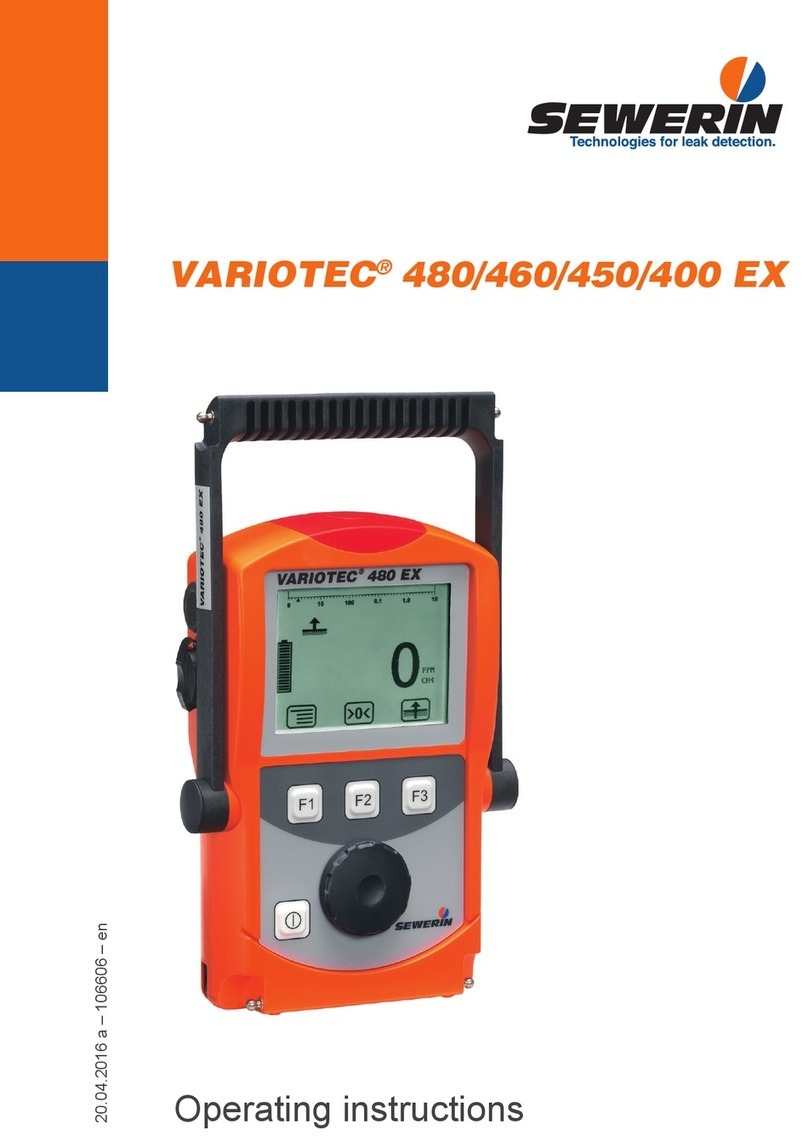
sewerin
sewerin VARIOTEC 480 EX User manual
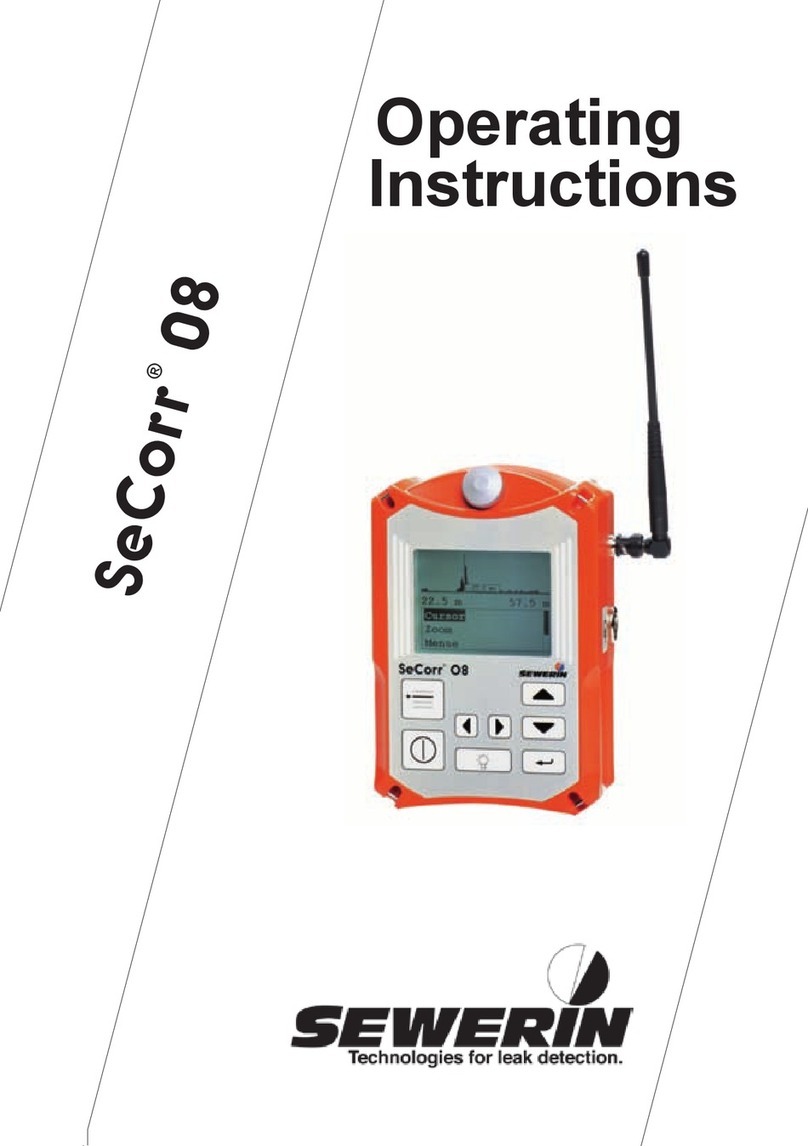
sewerin
sewerin SeCorr 08 User manual
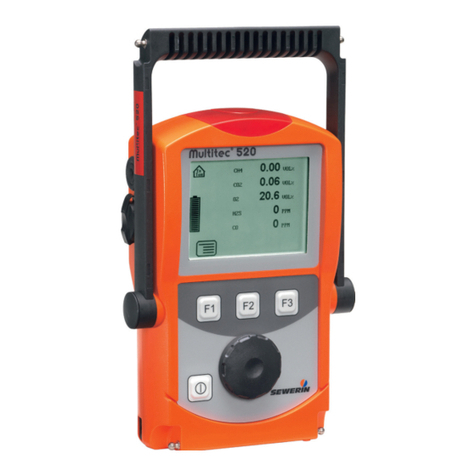
sewerin
sewerin Multitec 520 User manual
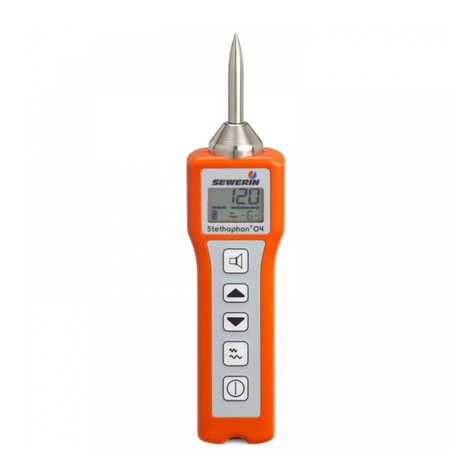
sewerin
sewerin Stethophon 04 User manual
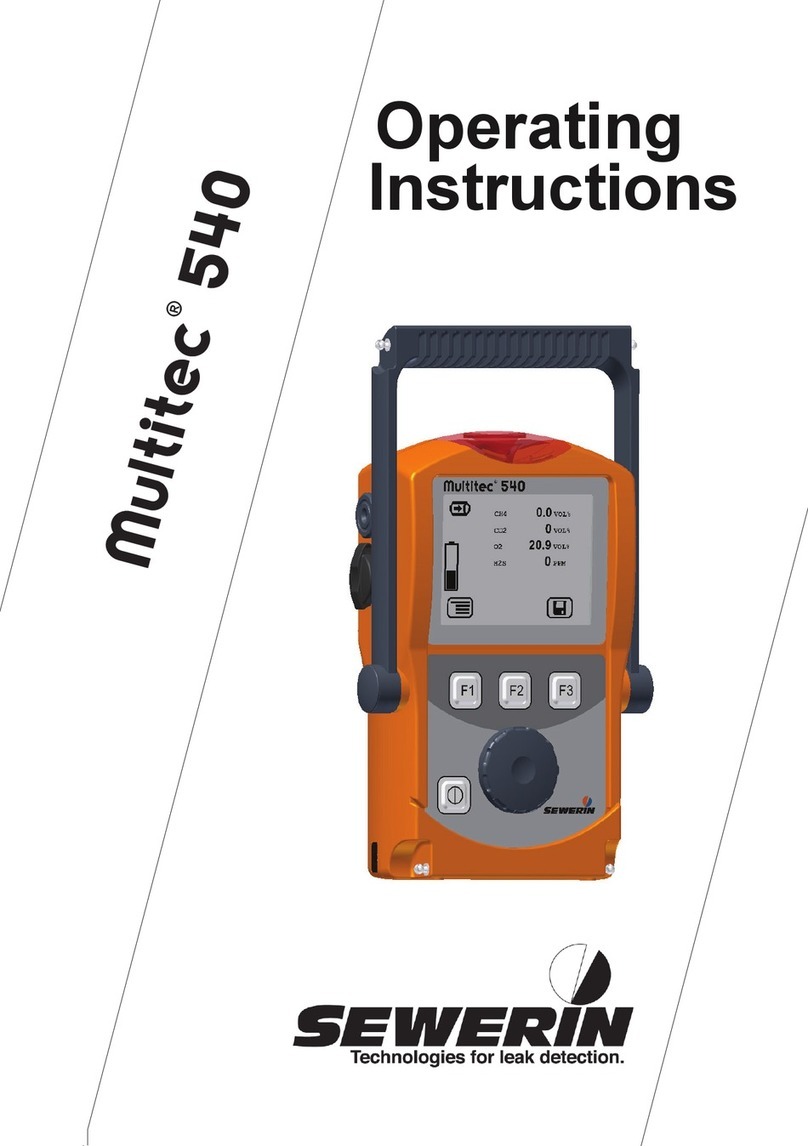
sewerin
sewerin Multitec 540 User manual
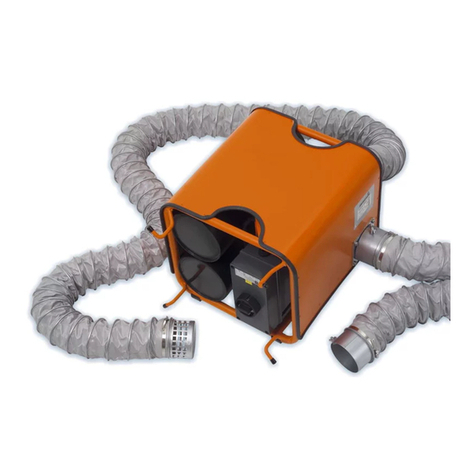
sewerin
sewerin FLIS-EX User manual
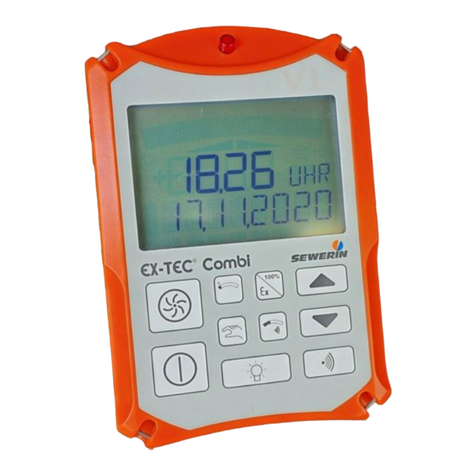
sewerin
sewerin EX-TEC Combi User manual
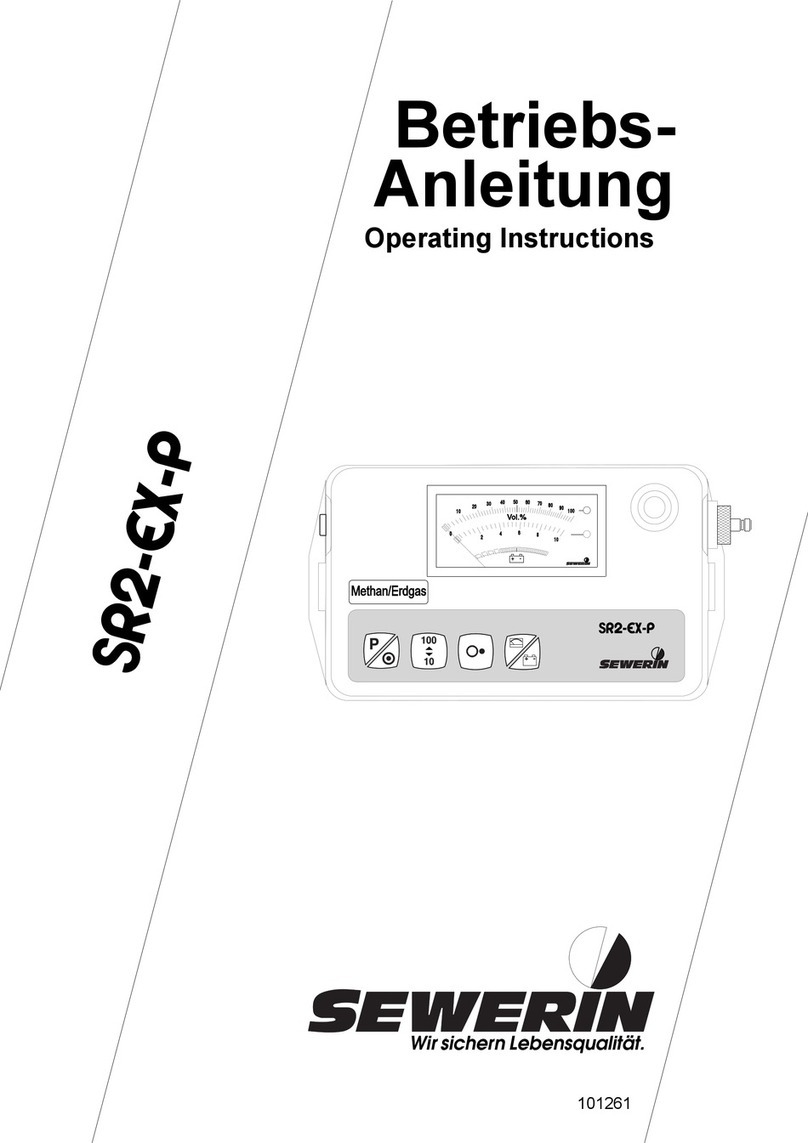
sewerin
sewerin SR2-EX-P User manual
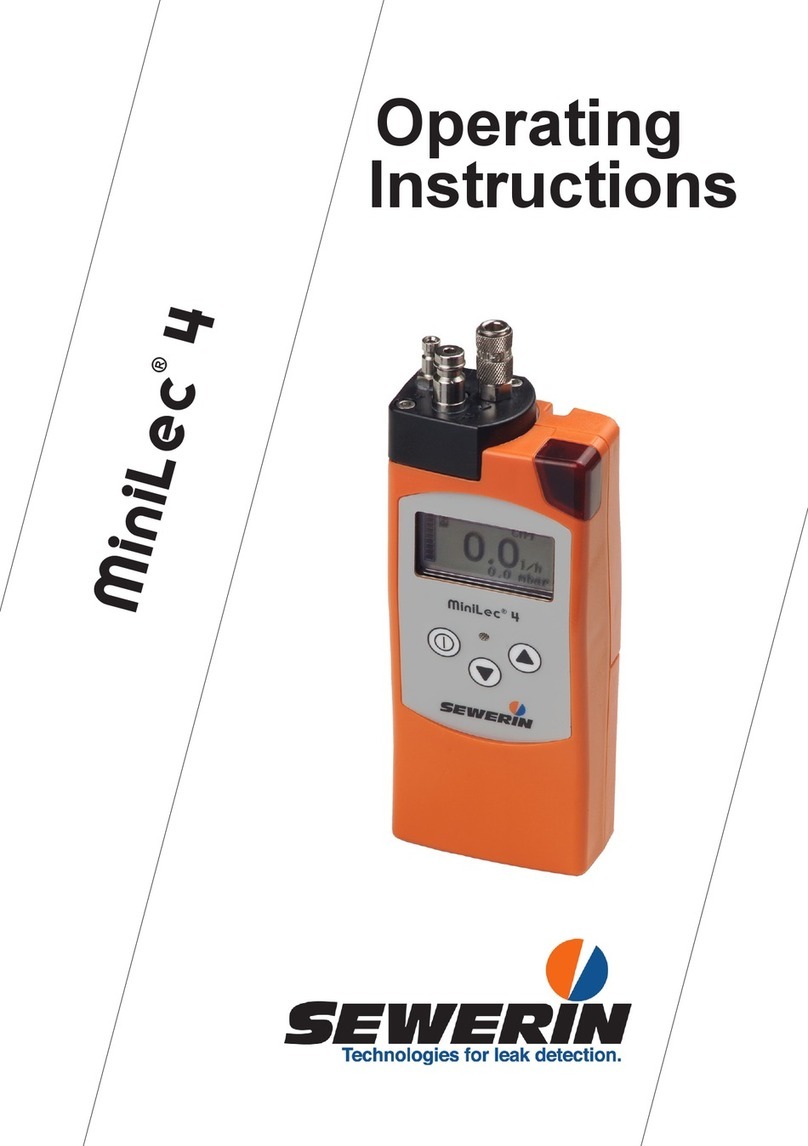
sewerin
sewerin miniLec 4 User manual
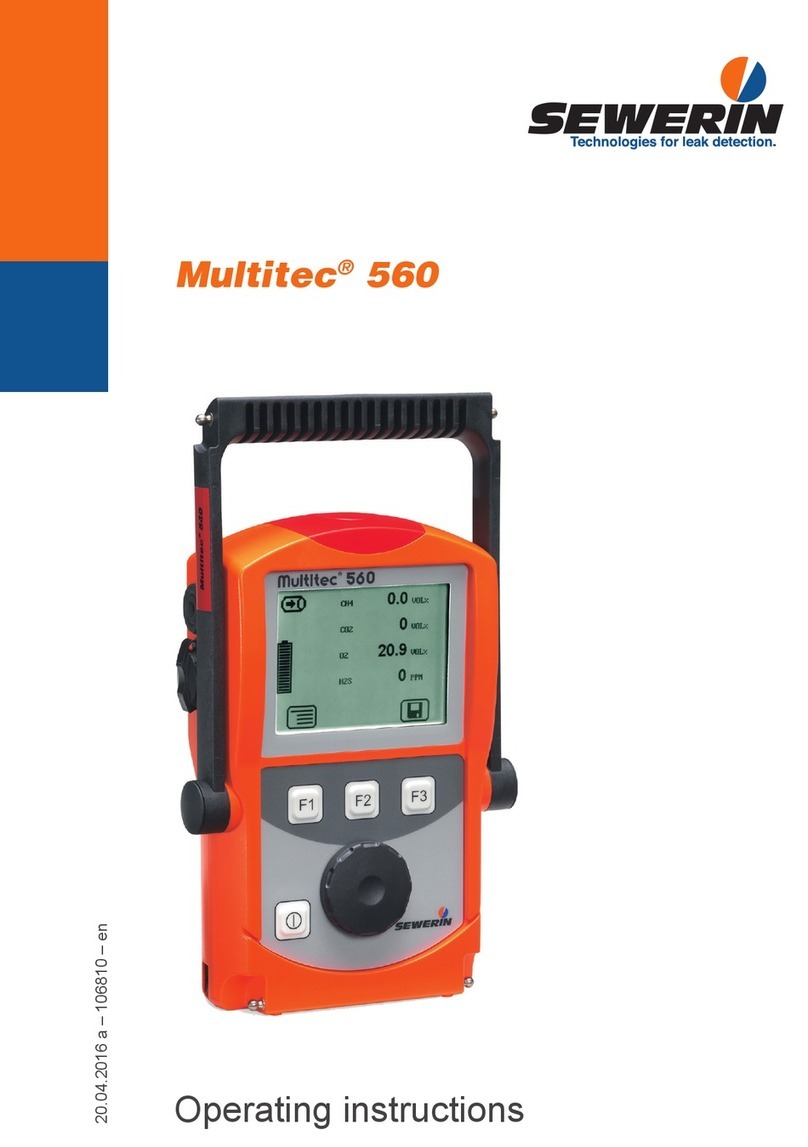
sewerin
sewerin Multitec 560 User manual

